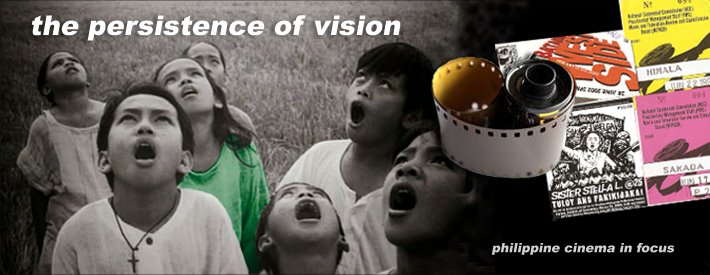
High school pics and youth-oriented movies were hugely popular in the 1980s. The teen angst movies of John Hughes made a big star of Molly Ringwald. In this part of the world, the local Brat Pack headed by William Martinez and Aga Muhlach thrilled fans with their own version of adventures and misadventures. The films, booming with generation-defining songs, dealt mostly with common adolescent problems such as fitting in, identity crisis, unrequited love, and strained relationship with parents. However, most of the films are mere teen fantasies. Plain-looking Andie (Ringwald) nabs a date with a rich and good-looking playboy in the cult classic Pretty in Pink. The young lads from Bagets get to drive fancy cars and bed sultry women. The films make it look like it was a good time to be in high school.
But, what is high school life really like during the tumultuous, waning years of the corrupt Marcos regime? Auraeus Solito’s Pisay is probably the definitive high school movie on the era. The production design, slang, and music are spot on. It captured perfectly the spirit of the times. President Ferdinand Marcos lifted martial law in 1981 but the political repression and corruption continue to flourish. Former Senator Benigno Aquino was assassinated in 1983. Yellow fever swept the people until its zenith in February 1986. The zeitgeist molded patriotic students and created courageous young heroes.
The film Pisay takes a look at how the 80s affected eight bright students of the Philippine Science High School. They are part of the so-called cream of the crop. Several of these gifted students have competed, and will compete, in local Quiz Bee contests and international academic competitions. The award-winning script by Henry Grajeda presented a vivid account of student life in a highly competitive national science high school. Important lessons were imparted via science and math themes that are easily understood by ordinary high school students. However, it is the film’s handling of political themes that makes it more memorable and accessible.
Episodic in nature, the movie starts with a ‘love story.’ Rom and Wena’s growing affection for one another gets smothered by their teacher, Ms. Casas. They are likened to planets veering away from their orbits and wrecking havoc on outer space. Ms. Casas reminds them to focus on their studies. The wordless meeting between the two along the hallway is beautifully filmed. The alternate student Rom barges into the honors roll but loses the girl. Parting is sweet sorrow indeed.
Mateo seems to be one of those who cannot focus on their studies. He is a bullied dormer who still yearns for his family in the province. This homesickness takes its toll on his grades. The chubby student gets dropped from the school rolls for failing a college-level math subject. He shares a valuable lesson to others like him who got kicked out. A Bell Curve diagram identifies them as winners who just happen to pale beside more diligent scholars. Mateo returns two years later to tell his teacher that he is taking up Mathematics in college.
There are more stories of other students who did not graduate with the batch. Liway, a student more attuned with social sciences than natural sciences, fights for better school facilities and repeal of the school’s segregation plan. Her courage stems from exposure to the works of her activist parents. The whole family had to go abruptly to Netherlands to escape political persecution. On the other hand, Minggoy is a budding astronomer whose life is cut short by an illness. His early death may be an allusion to numerous students killed by Marcos’ henchmen.
The stench of the crimes of the Marcos regime can not be isolated even from a government-funded high school. I’m not sure whether there was a strong student movement against Marcos in Pisay (Ms. Casas plaintively recalls a rally gone wrong) but surely, the students must have had strong opinion against Marcos after the Edsa Revolution. They will learn that among other hideous things, his crony was responsible for the cancellation of their dearly beloved anime show, Voltes V. Nowadays; graduating students barely have a clue about the legacy of Marcos. There is even an absurd movement to have his remains buried in the Libingan ng mga Bayani.
Solito and Grajeda, both members of their school's Silver Jubilarian batch this year, have made their alma mater proud with this excellent film. Solito made a courageous decision to shun science courses by taking up Theatre Arts in college (yes, the character Euri is based on him). He went on to create movies with markedly Filipino sensibilities. I still have a hard time choosing the best film of Solito. My answer usually is the last film I’ve recently seen from among these three movies: Ang Pagdadalaga ni Maximo Oliveros, Tuli, and Pisay. The latter film though is still his best directed film.
Congratulations to those graduating this year. Remember you are all winners even if you belong to the left side of the Bell curve’s right half.






















